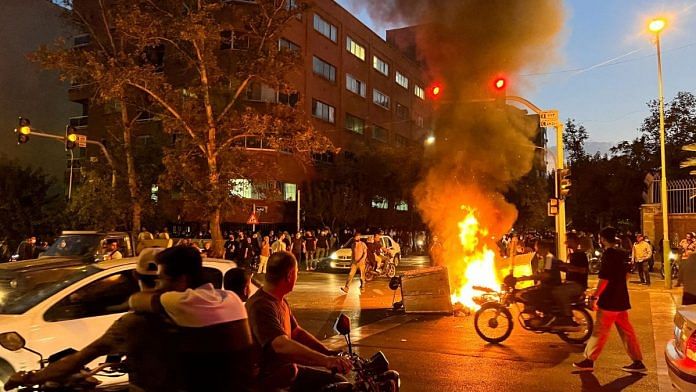The ongoing protests in Iran underline the need for women’s human rights. The one thing they have demonstrated is that oppression is essentially like a rubber ball— the harder you throw it, the harder it bounces back. The protests erupted after the death of 22-year-old Mahsa Amini in police custody on 16 September. She was arrested by the morality police on the grounds of violating the dress code.
Women are required to cover their heads with a headscarf, a rule that is enforceable and punishable under law in Iran. Her parents alleged that she was beaten to death by the police, contrary to the police’s statement that she suffered a heart attack. Since then, protests have spread like wildfire across the globe, with people across the world showing their support and solidarity for Iranian women.
Beginning outside the hospital and at Mahsa Amini’s funeral, the protests spread across the country within a week, The Guardian reports. Across the country, women have been burning hijabs and shouting ‘death to the dictator’ on the streets. Several videos across social media platforms show women cutting off their hair to protest the current regime. The protests have garnered global support, especially on social media. In October, Belgium’s foreign minister Hadja Lahbib, deputy Darya Safai, and member of European parliament, Abir-al-Sahlani cut off locks of their hair in parliament to show their support for the demonstrations in Iran.
The world has witnessed countless protests led by women, right from the women’s rights movement to the Chipko movement. What makes the demonstrations in Iran unique is Gen Z’s presence at the forefront. In an unexpected development, school and college students have joined the protests. A social media video shows school students in Karaj pushing an official off the school grounds. In another video, school students remove their headscarves, a rule mandated in schools. 16-year-old protestors, Nika Shakarami and Sarina Esmailzadeh, were killed in Tehran along with countless others of their age. According to the United Nations human rights office, 23 children have been killed in the protests so far.
Also read: Leaked documents reveal Iran ordered forces to be ‘merciless’ with protestors, says Amnesty
Iran’s protests and feminist movements in history share one common ideal, that of women’s human rights. The people’s slogan says it all. ‘Woman. Life. Freedom.’ What started off as collective shock and anger of women against the oppressive regime has turned into a revolution to overthrow the government itself. Although the government’s response has been extremely violent, the protests show no signs of culling. As of 17 October, more than 201 people have lost their lives in the demonstrations. According to Euronews, battle rifles such as AK-47s and machine guns were used by officials to fire at civilians. Iran’s supreme leader even went as far as blaming the US for ‘engineering’ the protests. Yet the demonstrations rage on. Why?
The answer is simple—change. What the Iranian government is witnessing is not a demonstration of women’s anger against the regime, but decades-old, suppressed, collective female rage. Iranian politician Ali Larijani’s call for a rethink on the hijab law reveal the impact Iranian citizens have created. In the words of women’s rights activist Nasrin Parvaz, “Today, the regime is not just fighting to maintain its power but its very survival.”
The author is a student at Christ University, Bengaluru. Views are personal



